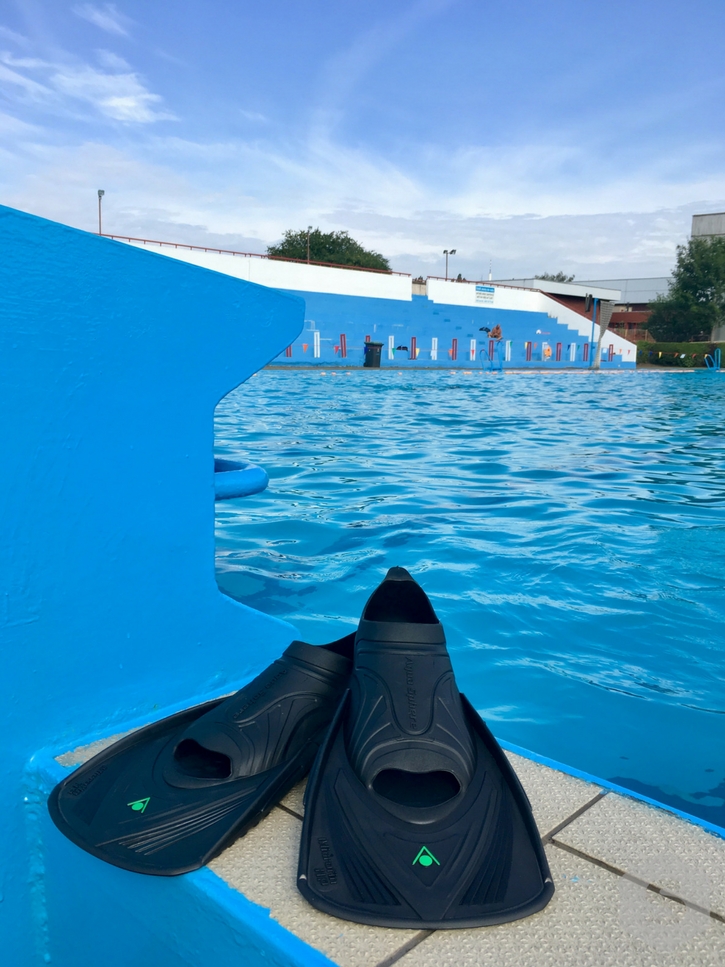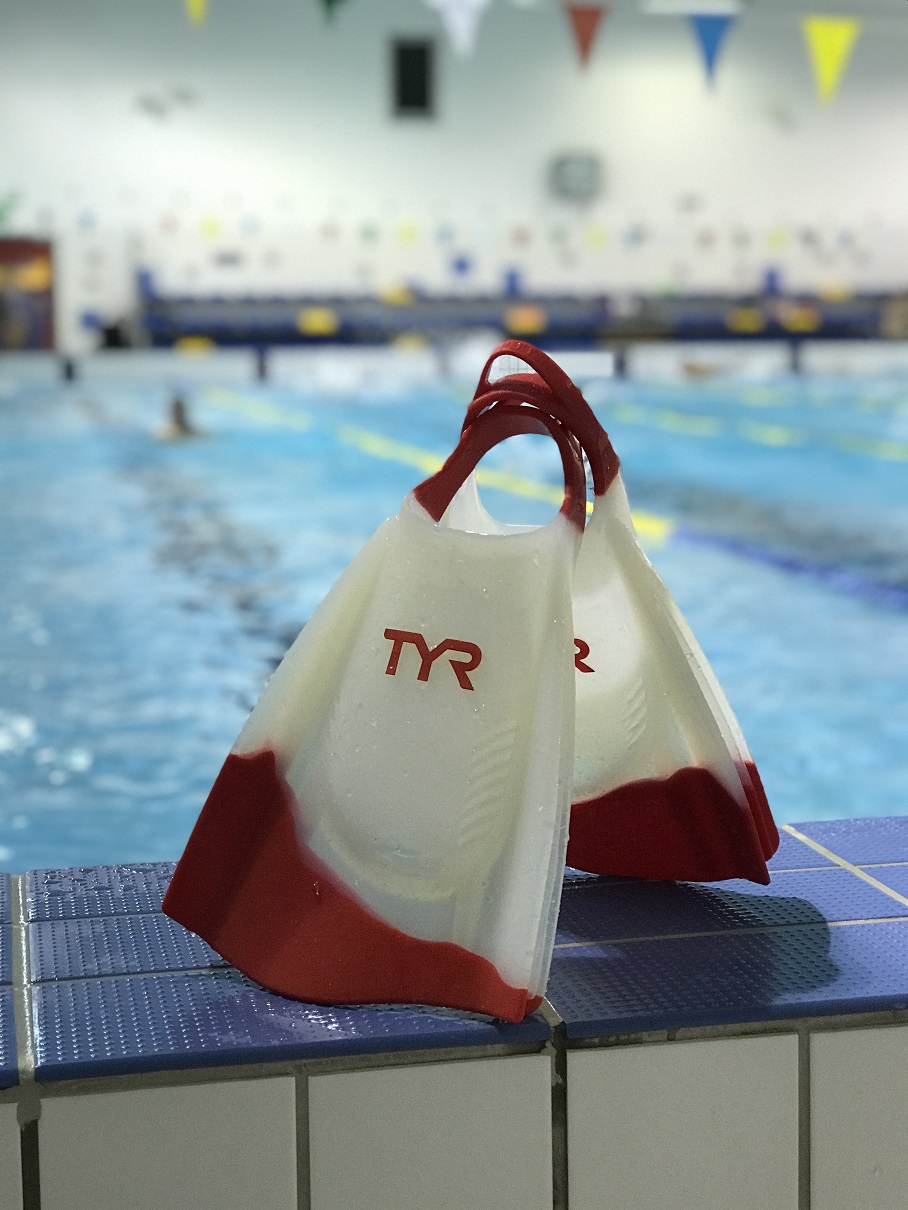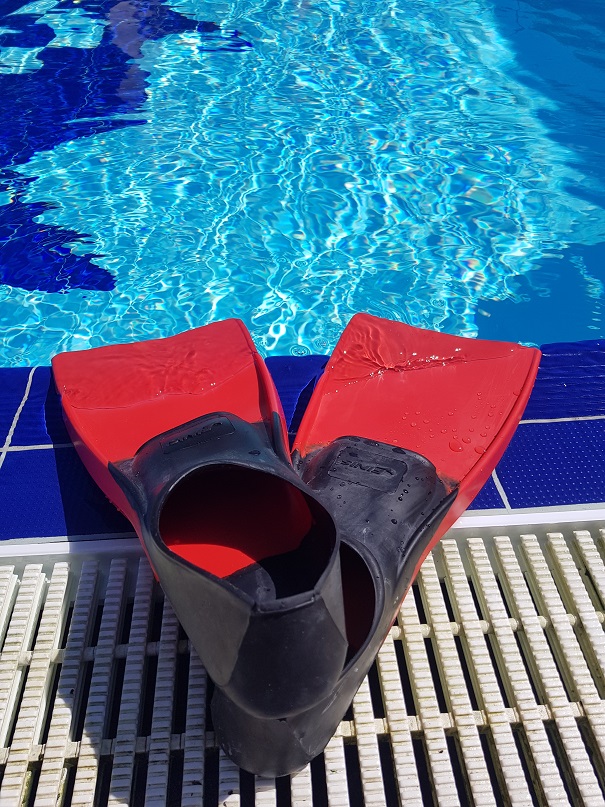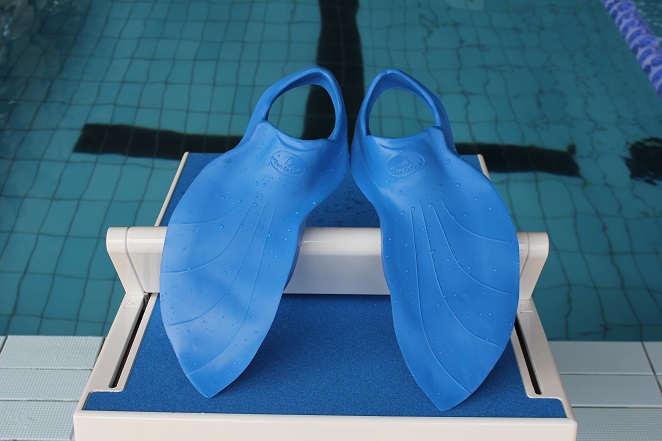We will advise you which fins to choose. Fins for swimming are great aids for both, beginners and experienced swimmers. They diversify your training, speed up swimming and help to correct the position of the body in the water. Do you know which fins to choose to make training a joy and not a pain?
Types of fins for swimming
Fins can be short or long, narrow or wide, soft or firm, full-foot or open-heel with just a strap, pointed or straight, or even specific shapes. The key to choosing is what you want to achieve with them in the pool and what you need them for.
How should fins for swimming fit?
When choosing, the most important thing is that the
fins fit your feet well. It is necessary that they are comfortable on the feet but they can’t be loose. If you make movements from your knees down they shouldn’t move as they could fall off at any moment. Even if you simulate crawl kicks, they should stick on your feet as they are made for you. Some fins have a hole in the front for the water to drain, but also for the fingers. Fins will slide more on your feet in the water in comparison when you try them on when your feet are dry, therefore it’s advisable to choose tighter ones, but of course not too tight. For those with narrower feet, we recommend models that complement their shape, so slimmer fins especially at the ankle and with an opening for the toes. It is better to concentrate only on the correct body position when swimming with fins than constantly worrying if your fins will fall off while swimming.
Fins for swimming with full-foot or open-heel?
For beginners, we definitely recommend the full-foot. The pressure in full-foot fins is better distributed throughout the swimmer's foot, helping the legs to make a kick more easily. Fins with open heels are usually chosen by swimmers who have wider ankles or are already experienced swimmers. The fins with open-heel should be avoided by those who have problems with Achilles tendons and may find the strap around the ankle uncomfortable.
Soft fins for swimming
They are especially suitable for beginners. The soft surface of the fins ensures smooth movement of the legs in the water. You don’t need to put as much force into kicking and swimming is not that exhausting. Fins for swimming help beginners maintain the correct horizontal position in the water and prevent the swimmer’s legs from sinking to the bottom. However, they can also be used by more advanced swimmers who have to kick more intensively if they want to increase their speed. These fins are the most common in Czech swimming pools because they are universal and very adaptable. Examples are fins from the
Born To Swim brand for wider insteps or
Aqua Sphere Microfin for narrow insteps.
Firm fins for swimming
They have a firm surface that you will not be able to bend. Firm fins for swimming, therefore, have greater water resistance. This means that you need to kick harder but you also swim faster. These fins are more suitable for more experienced, stronger swimmers or for those who already have some strength in their legs because swimming with them is more demanding. Firm fins for swimming are generally lower in frequency than soft ones. On the other hand, if you can master these fins, you will be at the other end of the pool in no time at all. Typical examples are the
Tyr Hydroblade or
Speedo Fastskin Kick fins.
Long blade swim fins
Those fins are more suitable for beginners or open-water swimmers. They speed up swimming and it’s easier to maintain the position in the water and improve the flexibility of the swimmer’s ankle. Just be careful, sometimes they are not liked in swimming pools, and they may be even forbidden. Long blade swim fins are, for example,
Finis Long Floating fins.
Specific fins for swimming
Some fins have specific shapes and serve different purposes.
Finis Positive Drive fins, for example, are adapted for all swimming styles, including breaststroke. Thanks to their round shape around the entire foot, and not just in front, swimmers can easily add breaststroke in the training.
The shape of
Aqua Sphere Alpha fins, which are asymmetrical and more hydrodynamic, allows more natural movements of the legs. They are made from a foam material that floats and is lighter than other fins. In addition, these fins float on the water's surface, so you can’t drown them :) You can also use them for all swimming styles.
How to swim with fins?
You can swim all swimming styles with classic fins except breaststroke. You can try to swim breaststroke with them, but you won’t achieve much! :) We recommend combining one exercise with fins and
other aids, especially with kickboards or hand paddles for better achievement.
Final advice:
It's better if you first wet the fins and then put them on your legs. When they are dry, it's noticeably more difficult to put them on. If you wet them first you can easily slip your feet into the swim fins. With this tip, you not only save effort but above all extend the lifetime of your fins. When you try to put them on dry, the full-foot heel or strap of the fin often breaks, this is why you should wet them first so that they can last as long as possible. :)
Final tip:
At the end of the training, do 200m butterfly legs with a kicking board and fins. It doesn’t hurt to strengthen your abs a little. :)



